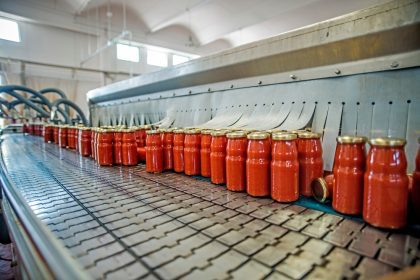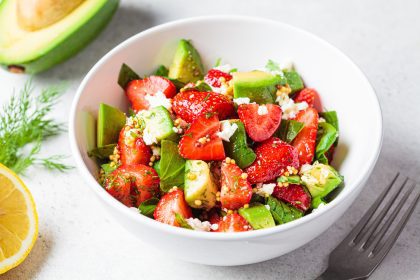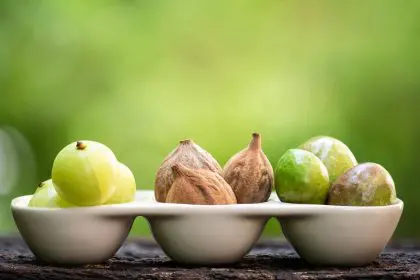The connection between nutrition and breast cancer prevention has emerged as one of the most promising areas of preventive health, offering women practical ways to reduce their risk through everyday food choices. While genetics and environmental factors play important roles in cancer development, dietary patterns can significantly influence cellular health and the body’s natural defense mechanisms against malignant transformation.
Certain foods contain powerful compounds that work at the molecular level to protect healthy cells, neutralize cancer-promoting substances, and support the immune system’s ability to identify and eliminate abnormal cells before they can develop into tumors. These protective nutrients include antioxidants that prevent DNA damage, anti-inflammatory compounds that reduce chronic inflammation linked to cancer development, and phytochemicals that can actually stop cancer cells from growing and spreading.
Understanding which foods provide the strongest protective benefits empowers women to make informed dietary choices that may significantly impact their long-term health outcomes. The foods highlighted here have been extensively studied for their cancer-fighting properties and represent some of nature’s most potent protective agents against breast cancer development.
1. Cruciferous vegetables deliver powerful detoxification compounds
Broccoli, cauliflower, Brussels sprouts, and cabbage contain unique sulfur compounds called glucosinolates that transform into potent cancer-fighting substances when chewed or chopped. These compounds, particularly sulforaphane and indole-3-carbinol, demonstrate remarkable abilities to neutralize carcinogens and prevent DNA damage that could lead to cancer development.
The detoxification pathways activated by cruciferous vegetables help the body eliminate harmful estrogen metabolites that can promote hormone-sensitive breast cancers. These vegetables also contain compounds that can actually cause cancer cells to self-destruct through a process called apoptosis, while leaving healthy cells unharmed.
Regular consumption of cruciferous vegetables has been associated with significantly reduced breast cancer risk, with the protective effects being most pronounced when these foods are eaten raw or lightly cooked to preserve their active compounds. Steaming, stir-frying, or eating them fresh in salads maximizes their cancer-fighting potential.
2. Berries pack concentrated antioxidant protection
Blueberries, strawberries, raspberries, and blackberries contain some of the highest concentrations of antioxidants found in any food group. These colorful compounds, including anthocyanins, ellagic acid, and resveratrol, work synergistically to protect cells from oxidative damage that can initiate cancer development.
The anthocyanins responsible for berries’ vibrant colors demonstrate specific anti-cancer properties, including the ability to inhibit tumor growth, prevent cancer cell invasion, and reduce inflammation throughout the body. Ellagic acid, particularly abundant in raspberries and strawberries, can bind to carcinogens and render them harmless before they can damage cellular DNA.
Fresh and frozen berries retain their protective compounds equally well, making them accessible year-round additions to cancer-protective meal plans. The synergistic effects of multiple antioxidant compounds in berries appear to provide greater protection than individual antioxidant supplements.
3. Leafy greens provide folate and protective phytonutrients
Spinach, kale, arugula, and other dark leafy greens supply folate, a B vitamin essential for proper DNA synthesis and repair. Folate deficiency can lead to chromosomal breaks and improper DNA methylation patterns that increase cancer risk, making adequate intake crucial for cellular health.
These nutrient-dense vegetables also contain lutein, zeaxanthin, and other carotenoids that function as powerful antioxidants throughout the body. The chlorophyll that gives greens their color has been shown to bind to carcinogenic compounds and prevent their absorption in the digestive tract.
The combination of folate, antioxidants, and fiber in leafy greens creates multiple layers of protection against cancer development. Regular consumption helps maintain optimal cellular function while supporting the body’s natural detoxification processes.
4. Tomatoes concentrate lycopene’s protective power
Tomatoes and tomato products contain high concentrations of lycopene, a carotenoid that demonstrates potent anti-cancer properties. This red pigment accumulates in breast tissue and provides localized protection against oxidative damage and inflammation that could contribute to cancer development.
Cooking tomatoes actually increases the bioavailability of lycopene, making tomato sauce, paste, and cooked tomato dishes particularly beneficial. The processing breaks down cell walls and makes this protective compound more easily absorbed by the body.
The cancer-protective effects of lycopene extend beyond antioxidant activity to include direct effects on cancer cell growth and proliferation. This compound can interfere with cancer cell signaling pathways and may help prevent the formation of new blood vessels that tumors need to grow.
5. Fatty fish deliver omega-3 inflammation fighters
Salmon, sardines, mackerel, and other cold-water fish provide omega-3 fatty acids that powerfully reduce inflammation throughout the body. Chronic inflammation creates an environment that promotes cancer development, making these anti-inflammatory fats particularly important for cancer prevention.
The EPA and DHA found in fatty fish can actually alter cell membrane composition in ways that make cells more resistant to cancerous transformation. These omega-3 fats also support immune system function and may help the body better recognize and eliminate abnormal cells.
Regular consumption of fatty fish provides sustained anti-inflammatory effects that can help counteract the pro-inflammatory effects of processed foods and environmental toxins. The protective benefits appear to be dose-dependent, with higher intakes providing greater protection.
6. Green tea compounds block cancer pathways
Green tea contains catechins, particularly epigallocatechin gallate (EGCG), that demonstrate remarkable anti-cancer properties through multiple mechanisms. These compounds can prevent cancer initiation, inhibit tumor growth, and even cause existing cancer cells to undergo programmed cell death.
EGCG interferes with several cellular pathways that cancer cells use to grow and spread, including blocking the formation of new blood vessels that tumors need for growth. This compound also enhances the effectiveness of the body’s natural antioxidant systems.
The cancer-protective effects of green tea appear to be strongest when consumed regularly over long periods. Multiple cups throughout the day provide sustained levels of protective compounds, though even moderate consumption offers meaningful benefits.
7. Turmeric’s curcumin targets multiple cancer processes
Turmeric contains curcumin, a compound with potent anti-inflammatory and anti-cancer properties that work through numerous cellular pathways. Curcumin can prevent DNA damage, reduce chronic inflammation, and interfere with cancer cell growth and survival mechanisms.
This golden spice demonstrates the ability to enhance the body’s natural detoxification processes while protecting healthy cells from damage. Curcumin also supports immune system function and may help the body better identify and eliminate abnormal cells before they can develop into tumors.
The bioavailability of curcumin increases significantly when consumed with black pepper or healthy fats, making curry dishes and turmeric-spiced foods prepared with oil particularly beneficial. Regular use in cooking provides ongoing protective benefits.
8. Garlic and onions boost immune surveillance
Garlic, onions, leeks, and other allium vegetables contain organosulfur compounds that support immune system function and enhance the body’s ability to detect and eliminate abnormal cells. These compounds also demonstrate direct anti-cancer effects by interfering with cancer cell growth and proliferation.
The immune-enhancing properties of allium vegetables help maintain optimal immune surveillance, which is crucial for preventing cancer development. A well-functioning immune system can identify and destroy abnormal cells before they have the chance to develop into tumors.
Fresh garlic appears to provide the strongest protective effects, with crushing or chopping releasing the most active compounds. Cooking at moderate temperatures preserves many of the beneficial properties while making these vegetables more palatable for regular consumption.
9. Citrus fruits provide multiple protective compounds
Oranges, grapefruits, lemons, and limes contain vitamin C, flavonoids, and limonene that work together to provide cancer protection. Vitamin C supports immune function and acts as a powerful antioxidant, while flavonoids demonstrate direct anti-cancer properties.
Limonene, found particularly in citrus peels, has shown the ability to prevent cancer development and may even help existing tumors regress. This compound supports the body’s natural detoxification processes and may interfere with cancer cell signaling pathways.
The protective compounds in citrus fruits are most concentrated in the whole fruit, including the white pith and zest. Using organic citrus zest in cooking and consuming whole fruits rather than just juice maximizes the cancer-protective benefits.
10. Nuts and seeds deliver healthy fats and minerals
Walnuts, flaxseeds, chia seeds, and other nuts and seeds provide omega-3 fatty acids, vitamin E, and minerals that support cellular health and cancer prevention. The healthy fats help reduce inflammation while vitamin E protects cell membranes from oxidative damage.
Flaxseeds contain lignans, plant compounds that can help regulate estrogen metabolism and may reduce the risk of hormone-sensitive breast cancers. These compounds also demonstrate antioxidant properties and support immune system function.
The combination of healthy fats, protein, fiber, and protective compounds in nuts and seeds makes them valuable additions to cancer-preventive eating patterns. Regular consumption provides sustained benefits for cellular health and immune function.
11. Beans and legumes offer fiber and phytonutrients
Black beans, lentils, chickpeas, and other legumes provide fiber that supports healthy gut bacteria and helps eliminate potential carcinogens from the body. The beneficial bacteria supported by fiber consumption also produce compounds that may help prevent cancer development.
Legumes contain various phytonutrients, including saponins and protease inhibitors, that demonstrate anti-cancer properties. These compounds can interfere with cancer cell growth and may help prevent the spread of existing tumors.
The high fiber content of beans and legumes also helps regulate hormone levels by supporting the elimination of excess estrogens through the digestive tract. This hormonal balance may be particularly important for preventing hormone-sensitive breast cancers.
12. Sweet potatoes and carrots supply beta-carotene protection
Orange vegetables like sweet potatoes, carrots, and winter squash contain high levels of beta-carotene and other carotenoids that provide antioxidant protection and support immune function. These compounds accumulate in tissues throughout the body and provide ongoing cellular protection.
Beta-carotene demonstrates the ability to enhance immune system responses and may help the body better recognize and eliminate abnormal cells. This compound also supports the maintenance of healthy cell membranes and proper cellular communication.
The cancer-protective effects of carotenoids appear to be strongest when obtained from whole food sources rather than supplements. Cooking these vegetables with small amounts of healthy fats improves the absorption of these fat-soluble protective compounds.
Creating synergistic protection through variety
The most effective cancer-protective eating patterns incorporate multiple foods from each category, creating synergistic effects that provide greater protection than any single food alone. Different protective compounds work through various mechanisms, and consuming a wide variety ensures comprehensive cellular protection.
Combining foods strategically can enhance the absorption and effectiveness of protective compounds. For example, consuming tomatoes with healthy fats increases lycopene absorption, while adding black pepper to turmeric enhances curcumin bioavailability.
Regular consumption patterns appear to be more important than occasional large amounts, suggesting that incorporating these foods into daily meals provides the most significant protective benefits. Building meals around these cancer-fighting foods creates sustainable eating patterns that support long-term health.
The protective effects of these foods extend beyond cancer prevention to support overall health, including cardiovascular function, immune system strength, and healthy aging. This comprehensive approach to nutrition provides multiple benefits that enhance quality of life while potentially reducing cancer risk.
















